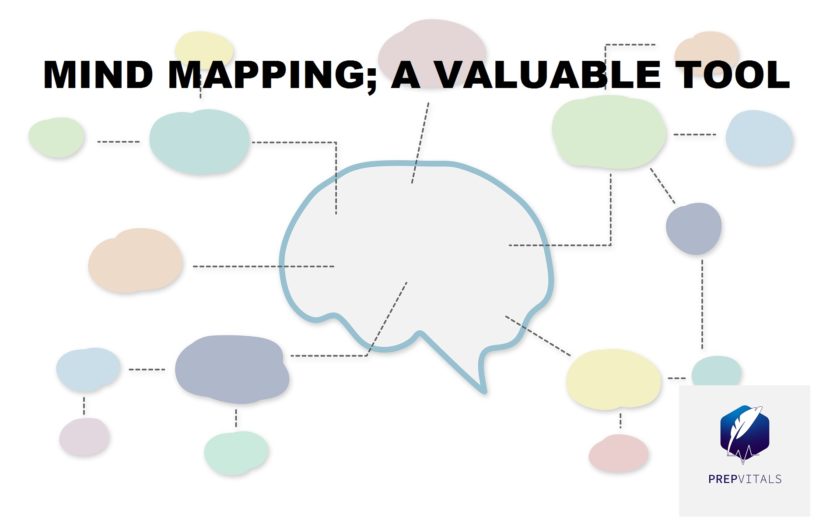Emotions, ideas, thoughts, and enormous amounts of data can feel intangible and the more intangible they feel the more they leave us unable to define a main central issue or idea that is on our mind. It has always been said you have all the answers, look deep inside yourself but that sentiment is too hypothetical. I have tried silently observing myself in heated moments, It is overwhelming and the confusion just piles up more. With a little help from mind mapping, we can get over this hurdle.
What is Mind Mapping?
It is a conduit for information to move in and out of your mind. A method of putting your unresolved intangibles (emotions, ideas, problems, a pile of knowledge) into an tangible form that you can access anytime.
A mind map is a diagram used to visually organize information. A hierarchy is made which shows relationships among pieces of the whole. It is created around a single concept, drawn or written in the center of a blank page, to which related ideas such as images, words, and parts of words are added. Major ideas are connected directly to the central concept, and other ideas branch out from those major ideas.

Mind Maps were made famous and practically productive by author and consultant, Tony Buzan. It is a two-dimensional structure, instead of the list format (which is never remembered precisely) customarily used to take notes.
Mind maps are a format that our minds find easy to memorize and recall as our minds store information in the form of pictures. Buzan hosted a TV series called Use Your Head in 1974 through the BBC TV channel where he used the term ’mind map’ and popularized it worldwide. He promoted the image of a radial tree, diagramming climacteric words in a colorful, radiant, tree-like structure.
Why use Mind Maps?
We live in an age of superfluous information, sometimes we are unable to pay selective attention to what matters and how to keep it with us for long periods of time. If you have financial issues, take a pen and paper and draw it out via mind mapping, the time you spend doing that will become your first investment towards effective management of finances. As you draw a map you are totally in the zone of active thinking about your issue/project/idea further deriving the main cause and solution to it.
Mind Maps are useful for:
- Brainstorming – individually or as a group
- Outlining and summarizing information.
- Effectively taking notes to be recalled easily.
- Combining data from different origins.
- Active thinking through complex problems and devising solutions.
- An effective way of a project presentation.
- A key learning tool for students.
- Active recall of information from your mind.



An amazing feature of mind maps is the ability to create significant and permanent cues for memory via specific colors or shapes given to a particular subject of interest. You can access the cues whenever you need to recall and consolidate your memory just by taking a look at the Map.
You must have heard the adage ’out of sight, out of mind’. Mind maps make sure that you always keep focused on what matters to you the most.
Let’s Draw A Mind Map
This map is going to be about making a presentation in five steps.
Step 1: Take a pen and plain paper. Write the name of the topic /issue/project that you are analyzing in the center of a page and draw a circle/square around it, as illustrated in figure 1, below.



Step 2: Draw lines outwardly from the central shape to show subheadings, crucial information or tasks that pertain to your subject. Tag these lines with your subheadings. (See figure 2, below.) I recommend using different colors, images, symbols, etc. for more clear cues.



Step 3: This step goes deep into the subject of the matter to divulge the next level of knowledge (related sub-topics, chores, or points, for example). Then, correlate them to the relevant subheadings. (See figure 3, below.)



Step 4. Draw lines out from the suitable headings and mark them, as shown in figure 4, below. This is a step towards becoming more specific about a concerned confounding factor or task.



Step 5. As you get to learn new facts, information, or think of auxiliary tasks, put them into your Mind Map in the proper spots.
A finalized Mind Map may have primary theme lines spreading out in all directions from the center, with sub-topics forking off these like branches and twigs from the trunk of a tree. Do not worry about the structure/pattern/organization of the map – this will evolve of its own accord. Let the mind map follow the path of creativity!
Tip:
While sketching Mind Maps on paper is more fun and traditional, software gadgets and apps like Coggle, Bubbl.us, Mindmeister, MindGenius, iMindMap, and Mindjet can strengthen the strategy by enabling you to generate high-quality Mind Maps, which you can then handily edit or revise.



I enjoy making these mind maps and they have helped me improve my creativity and productivity. Mind maps take away the baggage of your mind and you do not have to overthink, overestimate, or underestimate the gravity of an issue. Try them out and break the pattern of linear writing. You will feel the difference!
Written By: Dr. Sania Riaz
Author’s Introduction:
I’m Dr. Sania Riaz. I am a neuroscience and psychology enthusiast. Reading is my healing therapy, writing is my dream and diversity is my inspiration. Living each of these is a blessing.


